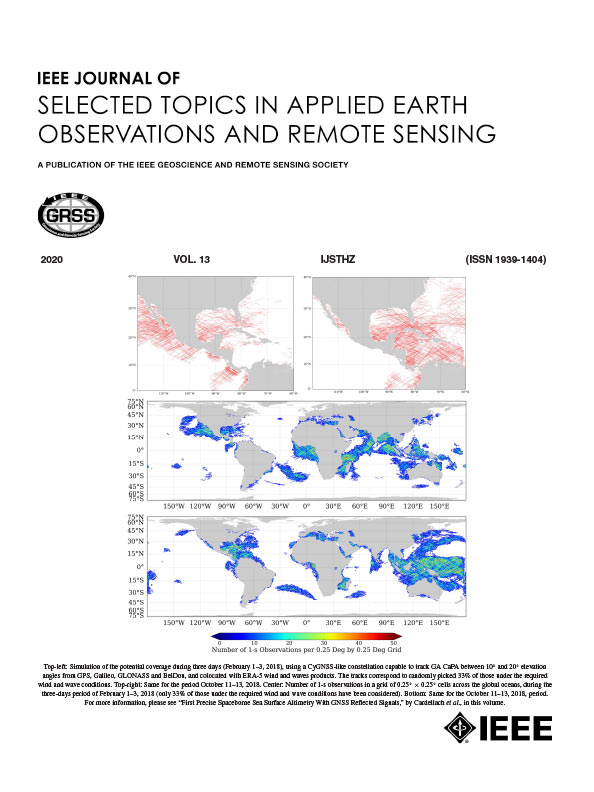UTSFANet: Unsupervised Two-Stage Fine Adjustment Network for Infrared Remote Sensing Image Stitching
IF 5.3
2区 地球科学
Q1 ENGINEERING, ELECTRICAL & ELECTRONIC
IEEE Journal of Selected Topics in Applied Earth Observations and Remote Sensing
Pub Date : 2025-07-01
DOI:10.1109/JSTARS.2025.3584788
引用次数: 0
Abstract
Image stitching aims to align two images from different perspectives. For infrared remote sensing images, the low resolution, lack of strong-feature points, and the presence of large textureless regions make it difficult to achieve effective feature matching and high-quality image stitching results. In the field of remote sensing stitching, the primary challenge is how to effectively extract features, reduce the influence of parallax, and improve the registration accuracy. To improve the image stitching performance and obtain parallax-tolerant fine registration results, we propose a two-stage image stitching method based on unsupervised learning. First, in the first stage, we use a multilevel feature extraction network to effectively extract image correlation features, progressively refining the registration from coarse to fine, thus ensuring performance under large-baseline conditions. Second, by utilizing a discrete-feature detection module in the multilevel network, we remove anomalous feature regions and recombine effective local feature regions, enabling the fusion of detailed features with global features and improving registration accuracy. Finally, in the second stage, an image fine adjustment module is applied to process the image background and foreground, further eliminating parallax artifacts and improving registration accuracy. Compared with the existing methods, our method has advantages in both registration accuracy and parallax tolerance. Extensive experiments demonstrate that our method effectively registers and stitches infrared remote sensing images on both the self-built infrared remote sensing dataset and the publicly available UDIS-D dataset, outperforming current state-of-the-art methods in terms of performance.UTSFANet:红外遥感图像拼接的无监督两级微调网络
图像拼接的目的是对齐来自不同角度的两个图像。红外遥感图像分辨率低,缺乏强特征点,存在大面积无纹理区域,难以实现有效的特征匹配和高质量的图像拼接结果。在遥感拼接领域,如何有效地提取特征,降低视差的影响,提高配准精度是一个主要的挑战。为了提高图像拼接性能,获得容忍视差的精细配准结果,提出了一种基于无监督学习的两阶段图像拼接方法。首先,在第一阶段,我们使用多级特征提取网络有效提取图像相关特征,逐步将配准从粗细化到细,从而保证在大基线条件下的性能。其次,利用多层网络中的离散特征检测模块,去除异常特征区域,重组有效的局部特征区域,实现细节特征与全局特征的融合,提高配准精度;最后,在第二阶段,应用图像精细调整模块对图像背景和前景进行处理,进一步消除视差伪影,提高配准精度。与现有方法相比,该方法在配准精度和视差容差方面都具有优势。大量实验表明,我们的方法在自建红外遥感数据集和公开可用的UDIS-D数据集上都能有效地对红外遥感图像进行配准和拼接,在性能上优于当前最先进的方法。
本文章由计算机程序翻译,如有差异,请以英文原文为准。
求助全文
约1分钟内获得全文
求助全文
来源期刊
CiteScore
9.30
自引率
10.90%
发文量
563
审稿时长
4.7 months
期刊介绍:
The IEEE Journal of Selected Topics in Applied Earth Observations and Remote Sensing addresses the growing field of applications in Earth observations and remote sensing, and also provides a venue for the rapidly expanding special issues that are being sponsored by the IEEE Geosciences and Remote Sensing Society. The journal draws upon the experience of the highly successful “IEEE Transactions on Geoscience and Remote Sensing” and provide a complementary medium for the wide range of topics in applied earth observations. The ‘Applications’ areas encompasses the societal benefit areas of the Global Earth Observations Systems of Systems (GEOSS) program. Through deliberations over two years, ministers from 50 countries agreed to identify nine areas where Earth observation could positively impact the quality of life and health of their respective countries. Some of these are areas not traditionally addressed in the IEEE context. These include biodiversity, health and climate. Yet it is the skill sets of IEEE members, in areas such as observations, communications, computers, signal processing, standards and ocean engineering, that form the technical underpinnings of GEOSS. Thus, the Journal attracts a broad range of interests that serves both present members in new ways and expands the IEEE visibility into new areas.

 求助内容:
求助内容: 应助结果提醒方式:
应助结果提醒方式:


